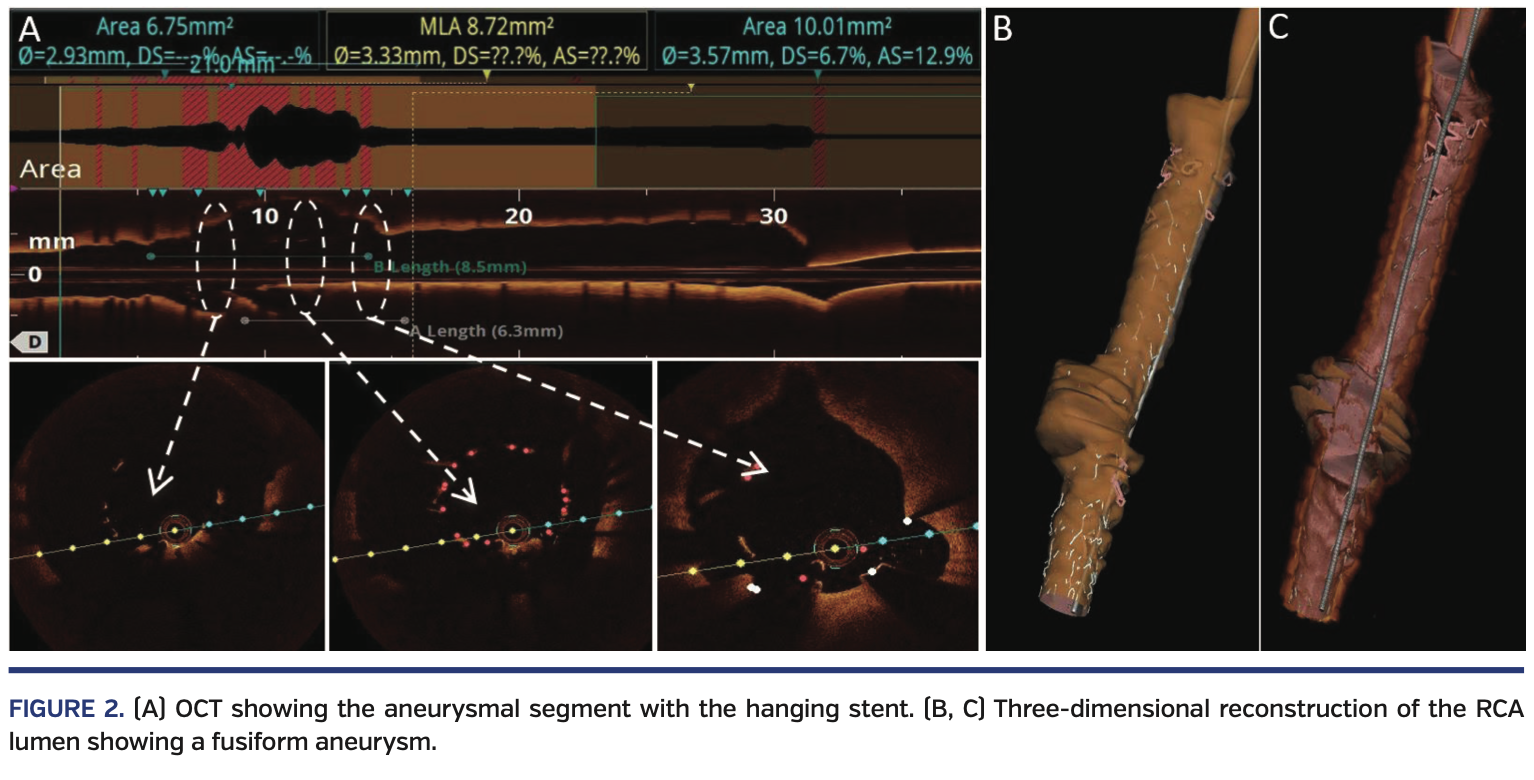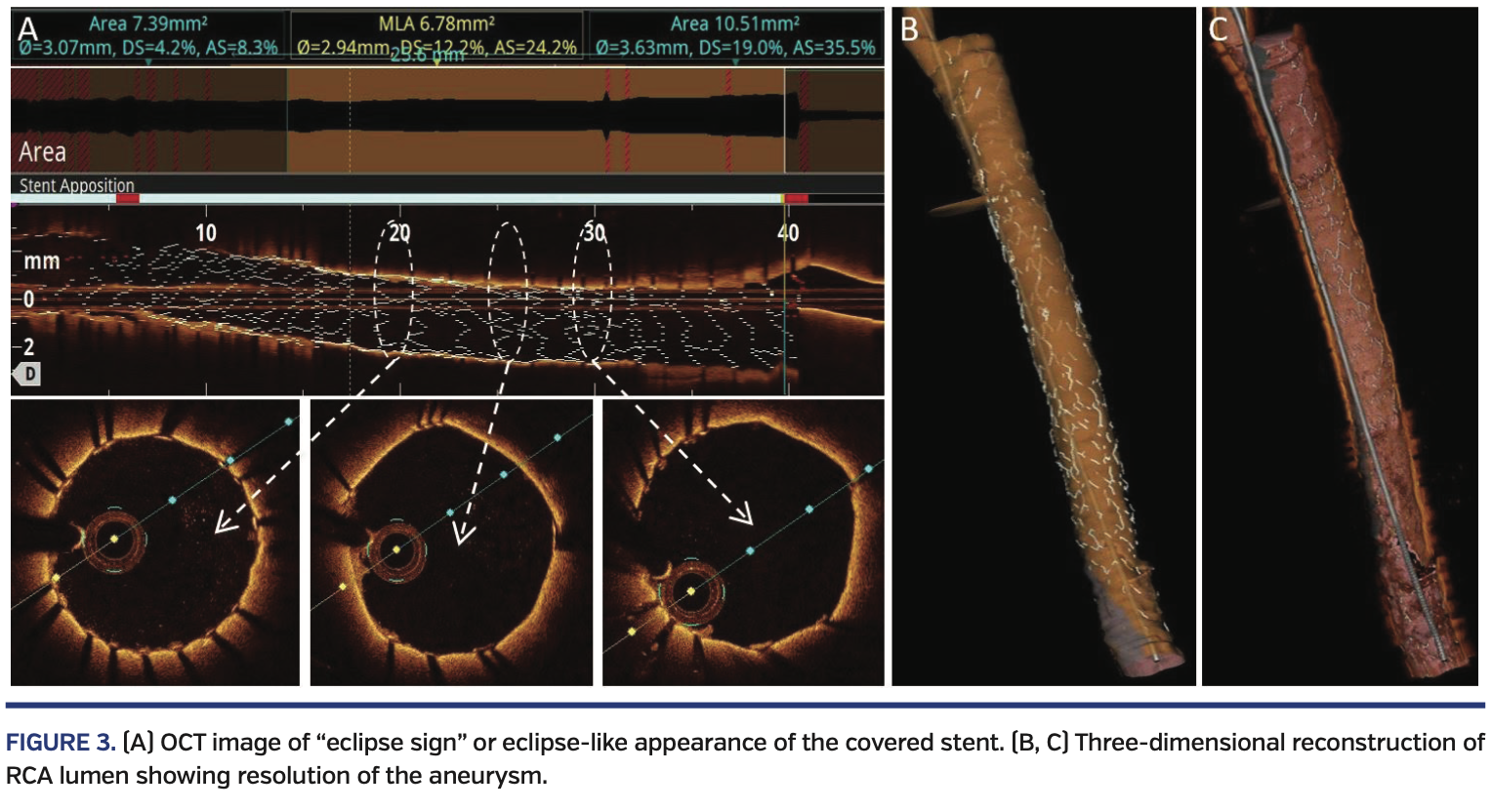ADVERTISEMENT
Everolimus-Eluting Stent Causing Coronary Artery Aneurysm in 7 Days: 3D-OCT Findings and Management
J INVASIVE CARDIOL 2020;32(11):E301-E302.
Key words: drug-eluting stents, thrombolysis
A 54-year-old man presented with ST-elevation inferior wall myocardial infarction (STEIWMI) and was thrombolyzed with streptokinase. After 2 weeks, angiography showed proximal right coronary artery (RCA) diffuse plaque followed by mid thrombotic cut-off. Two sirolimus-eluting stents were placed (3 x 32 mm in the distal to mid RCA and 3 x 28 mm in the mid RCA overlapping the first stent).
After 2 months, the patient had repeat STEIWMI and was found to have RCA cut-off proximal to mid RCA stent. The lesion was crossed with a Sion Blue wire (Asahi Intecc) and was predilated with a 2 x 15 mm semicompliant balloon at 12 atm. One 3 x 48 mm everolimus-eluting stent (Xience Xpedition; Abbott Vascular) was deployed in the mid to proximal RCA at 14 atm, overlapping the previous stents. Postdilation was done with a 3.5 x 10 mm non-compliant balloon at 16-18 atm. TIMI III flow was present in the RCA (Figure 1A).
Seven days later, the patient reported to the emergency department with a 2-day history of anginal chest pain at rest, which was progressive and not relieved by sublingual nitrates. Patient gave no history of fever and white blood cell counts were normal. Electrocardiogram did not show any fresh changes and serum creatine kinase-MB and troponin T levels were within normal limits.
Coronary angiography showed a fusiform coronary artery aneurysm in the proximal RCA at the site of the new stent (Figure 1B). Optical coherence tomography (OCT) showed a 6 x 8 mm aneurysm with stent hanging in between (Figure 2; Video 1). A 3.5 x 16 mm covered stent (Graftmaster; Abbott Vascular) was placed in the aneurysmal segment with instant angiographic resolution (Figure 1C). OCT was done and an “eclipse sign” was seen due to the eclipse-like appearance of the covered stent on imaging (Figure 3; Video 2). The patient became pain free and was discharged the next day. Follow-up at 1 year showed the patient was stable and asymptomatic.
Drug-eluting stents, because of their antiproliferative action, may delay neointimal healing after injury to the vessel wall, thus predisposing the vessel to aneurysm formation. The decision for intervention is often made on a case-by-case basis; present strategies include medical management, percutaneous interventions using covered stents or stent-assisting coiling, and surgical interventions.
View Supplemental Videos Here.
From the Base Hospital Delhi Cantt, New Delhi, India.
Disclosure: The authors have completed and returned the ICMJE Form for Disclosure of Potential Conflicts of Interest. The authors report no conflicts of interest regarding the content herein.
The authors report that patient consent was provided for publication of the images used herein.
Manuscript accepted January 29, 2020.
Address for correspondence: Dr Sanya Chhikara, Department of Cardiology, Base Hospital Delhi Cantt, New Delhi, India 110010. Email: chhikarasanya@gmail.com
















